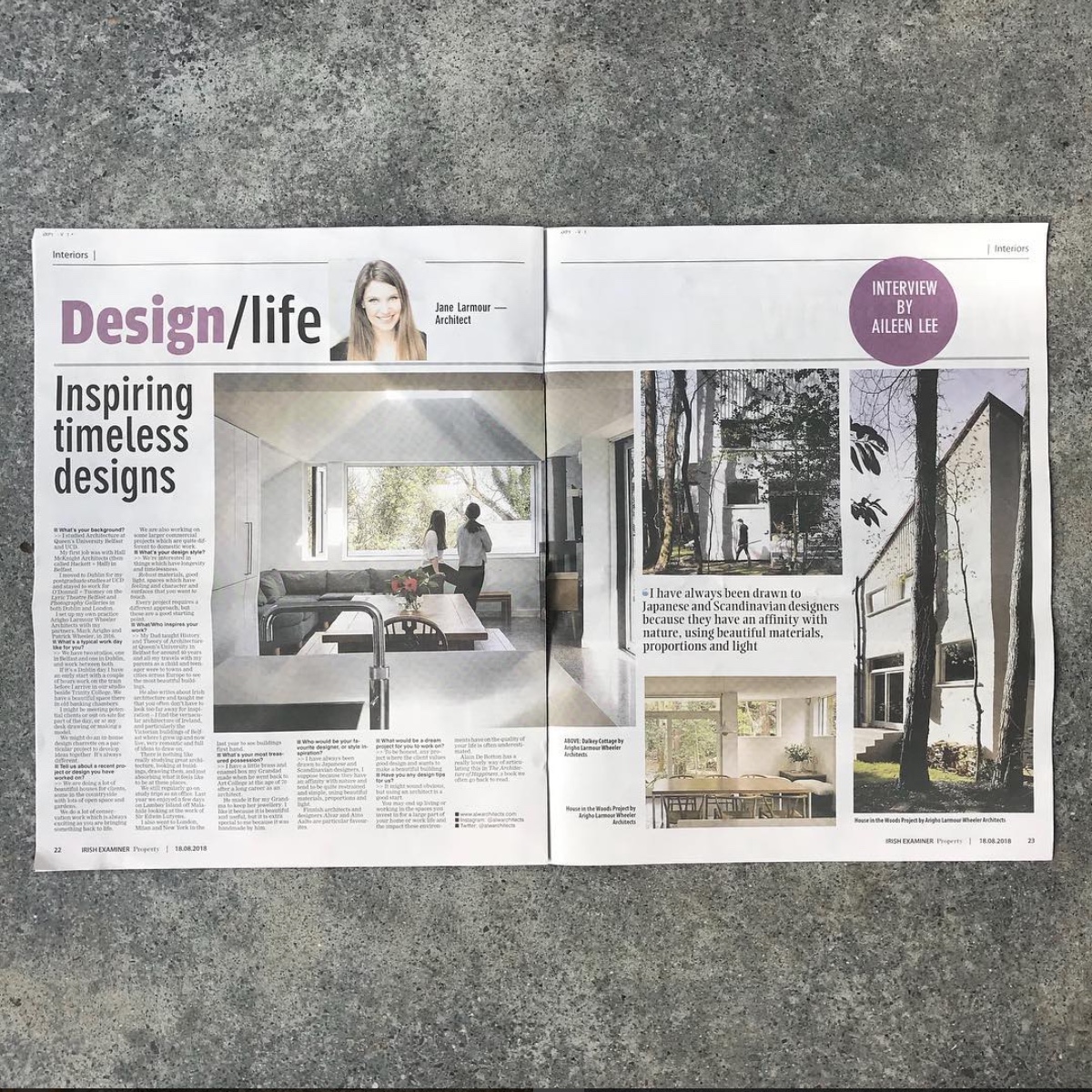Aileen Lee of the The Irish Examner spoke to Jane Larmour about her 'Design Life' in this weeks Interiors supplement. You can read the full interview here...
What’s your background?
I studied Architecture at Queen’s University Belfast and UCD. My first job was with Hall McKnight Architects (then called Hackett + Hall) in Belfast. I moved to Dublin for my postgraduate studies at UCD and stayed to work for O’Donnell + Tuomey on the Lyric Theatre Belfast and Photography Galleries in both Dublin and London.
I set up my own practice Arigho Larmour Wheeler Architects with my partners, Mark Arigho and Patrick Wheeler, in 2016.
What’s a typical work day like for you?
We have two studios, one in Belfast and one in Dublin, and work between both.
If it’s a Dublin day I have an early start with a couple of hours work on the train before I arrive in our studio beside Trinity College. We have a beautiful space there in old banking chambers. I might be meeting potential clients or out on-site for part of the day, or at my desk drawing or making a model. We might do an in-house design charrette on a particular project to develop ideas together. It’s always different.
Tell us about a recent project or design you have worked on?
We are doing a lot of beautiful houses for clients, some in the countryside with lots of open space and gardens. We do a lot of conservation work which is always exciting as you are bringing something back to life. We are also working on some larger commercial projects which are quite different to domestic work.
What’s your design style?
We’re interested in things which have longevity and timelessness.
Robust materials, good light, spaces which have feeling and character and surfaces that you want to touch. Every project requires a different approach, but these are a good starting point.
What/Who inspires your work?
My Dad taught History and Theory of Architecture at Queen’s University in Belfast for around 40 years and all my travels with my parents as a child and teenager were to towns and cities across Europe to see the most beautiful buildings.
He also writes about Irish architecture and taught me that you often don’t have to look too far away for inspiration – I find the vernacular architecture of Ireland, and particularly the Victorian buildings of Belfast where I grew up and now live, very romantic and full of ideas to draw on.
There is nothing like really studying great architecture, looking at buildings, drawing them, and just absorbing what it feels like to be at these places. We still regularly go on study trips as an office. Last year we enjoyed a few days on Lambay Island off Malahide looking at the work of Sir Edwin Lutyens. I also went to London, Milan and New York in the last year to see buildings first hand.
What’s your most treasured possession?
I have a little brass and enamel box my Grandad made when he went back to Art College at the age of 70 after a long career as an architect.
He made it for my Grandma to keep her jewellery. I like it because it is beautiful and useful, but it is extra special to me because it was handmade by him.
Who would be your favourite designer, or style inspiration?
I have always been drawn to Japanese and Scandinavian designers, I suppose because they have an affinity with nature and tend to be quite restrained and simple, using beautiful materials, proportions and light.
Finnish architects and designers Alvar and Aino Aalto are particular favourites.
What would be a dream project for you to work on?
To be honest, any project where the client values good design and wants to make a beautiful building.
Have you any design tips for us?
It might sound obvious, but using an architect is a good start.
You may end up living or working in the spaces you invest in for a large part of your home or work life and the impact these environments have on the quality of your life is often underestimated.
Alain De Botton has a really lovely way of articulating this in The Architecture of Happiness, a book we often go back to read.

